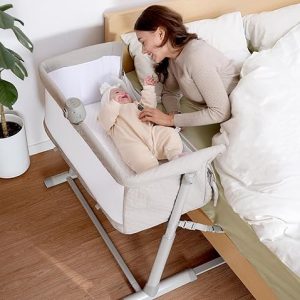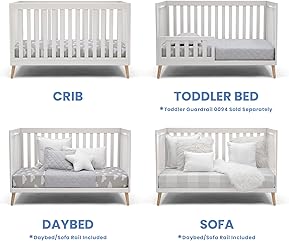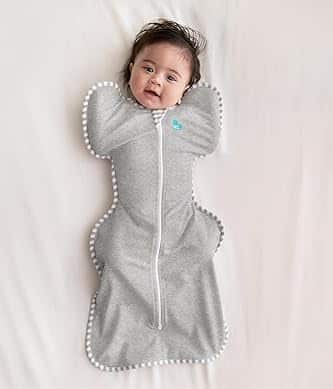
How to choose the best crib for your baby
How to choose the best: A Complete Guide for New Parents. Choosing the right crib for your baby is one of the most important decisions you’ll make as a new parent. Your baby will spend a lot of time sleeping, especially in the first year, so selecting a crib that is safe, comfortable, and functional is essential.
In this guide, we’ll cover how to choose a crib that fits your lifestyle, budget, and nursery space—while keeping your baby’s safety and comfort a top priority.
Contents
- 1 How to choose the best crib: A Complete Guide for New Parents
- 2 Why Choosing the Right Crib Matters
- 3 1. Know the Types of Cribs Available
- 3.1 ❖ Standard Cribs
- 3.2 ❖ Convertible Cribs
- 3.3 ❖ Mini Cribs
- 3.4 ❖ Portable or Travel Cribs
- 3.5 2. Safety Standards: What to Look For
- 3.6 3. Check Mattress Compatibility and Support
- 3.7 4. Prioritize Functionality and Features
- 3.8 5. Consider Design, Material, and Finish
- 3.9 6. Measure Your Nursery Space
- 3.10 7. Think Long-Term: Will It Grow With Your Baby?
- 3.11 8. Set a Realistic Budget
- 3.12 9. Read Reviews and Ratings
- 3.13 10. Final Tips for Choosing the Perfect Crib
- 4 Buy from a Trustworthy Store
- 5 Conclusion: Choosing the Right Crib for Your Baby
- 6 FAQ: How to Choose a Crib
- 6.1 1. What safety standards should I look for?
- 6.2 2. What types of cribs are available?
- 6.3 3. What materials are best for cribs?
- 6.4 5. What size mattress should I buy?
- 6.5 6. Are drop-down sides safe?
- 6.6 7. How much should I spend on a crib?
- 6.7 8. How do I choose a crib style?
- 6.8 9. What should I know about assembly?
- 6.9 10. Where can I find reliable reviews?
How to choose the best crib: A Complete Guide for New Parents
A New Crib Is the Greatest Option
While it may be tempting to utilize a crib that has been passed down through the generations, it is safer to use a brand-new crib that meets all federal safety criteria rather than a used one. In 2011, the federal authorities banned drop-side cribs and other similar products as part of updated crib requirements. Your infant will have the safest possible sleep environment in a crib manufactured after 2013 (to provide some wiggle space for the new requirements to be implemented).
Another thing to think about is that a used or secondhand crib’s structural integrity could have been compromised due to time, installation, and disassembly, or the number of rooms or hands it has been through, which might put the infant at even more risk. Purchasing a new crib removes the concern of furniture being damaged by humidity, hard usage, and other issues.
Why Choosing the Right Crib Matters
A crib isn’t just another baby item—it’s where your infant will spend up to 16–18 hours a day sleeping during the early months. A good crib provides a secure, firm surface for healthy development and supports safe sleep practices, reducing the risk of Sudden Infant Death Syndrome (SIDS).
1. Know the Types of Cribs Available
Before diving into features, it’s important to understand the types of cribs available:
❖ Standard Cribs
- Full-size, non-convertible.
- Classic and often more affordable.
- Ideal if you plan to move your child to a toddler bed later.
❖ Convertible Cribs
- Can convert into toddler beds, daybeds, and sometimes even full-size beds.
- Great long-term value.
- Make sure conversion kits are included or sold separately.
❖ Mini Cribs
- Smaller than standard cribs.
- Ideal for small spaces or apartment living.
- Some are portable with wheels.
❖ Portable or Travel Cribs
- Lightweight, foldable, and easy to store.
- Best for travel or temporary setups.
- Not meant for long-term use.
2. Safety Standards: What to Look For
Safety is non-negotiable. When choosing a crib, make sure it meets these criteria:
-
JPMA or CPSC Certification: Always choose cribs that meet Consumer Product Safety Commission or Juvenile Products Manufacturers Association standards.
-
Slat Distance: Slats should be no more than 2 3/8 inches apart (about the width of a soda can).
-
No Drop-Side Rails: These are banned in the U.S. due to safety hazards.
-
Proper Mattress Fit: No more than two fingers should fit between the mattress and the crib frame.
-
Sturdy Frame: Shake the crib slightly—it shouldn’t wobble or creak.
3. Check Mattress Compatibility and Support
The crib and mattress should work together for optimal safety and comfort.
-
Firm Mattress: Soft mattresses can increase the risk of SIDS.
-
Adjustable Mattress Height: Look for cribs with at least 2–3 height levels so you can lower the mattress as your baby grows.
-
Standard vs. Mini Mattress Sizes: Make sure the crib you choose fits a standard or mini crib mattress securely.
4. Prioritize Functionality and Features
➤ Adjustable Mattress Height: Helps reduce strain when picking up your baby and keeps your child secure as they grow and start standing.
➤ Teething Rails: Protect the crib rails (and your baby’s teeth) during the teething stage.
➤ Wheels or Casters: Allow you to move the crib easily for cleaning or rearranging.
➤ Storage Drawers: Some cribs come with built-in drawers—handy for diapers, bedding, or baby clothes.
5. Consider Design, Material, and Finish
Style matters—your crib should match your nursery and personal preferences.
- Material: Most cribs are made of wood, but some include metal or composite options.
- Finish: Non-toxic, lead-free paint or varnish is a must.
- Color: Neutral tones like white, gray, or natural wood are popular and timeless.
6. Measure Your Nursery Space
Before buying, measure the available space. Keep in mind:
- Mini cribs save space in smaller rooms.
- Convertible cribs are larger but long-lasting.
- Allow at least 2 feet of clearance around the crib for access and safety.
7. Think Long-Term: Will It Grow With Your Baby?
If you’re planning to use the crib beyond infancy, go for:
- Convertible cribs with included toddler and full-size bed conversion kits.
- Sturdy construction for durability.
- Timeless design that won’t go out of style.
8. Set a Realistic Budget
Cribs vary widely in price. Here’s what to expect:
| Crib Type | Price Range |
|---|---|
| Standard Cribs | $100–$300 |
| Convertible Cribs | $150–$600+ |
| Mini Cribs | $100–$250 |
| Travel Cribs | $60–$200 |
Always factor in additional costs for the mattress, bedding, and conversion kits.
9. Read Reviews and Ratings
Before buying, read customer reviews on trusted platforms like:
- Amazon
- BuyBuy Baby
- Target
- Walmart
Look for reviews that mention:
- Ease of assembly
- Sturdiness
- Mattress fit
- Paint/finish quality
- Customer service experience
10. Final Tips for Choosing the Perfect Crib
- Don’t buy or use secondhand cribs without checking recall history and parts.
- Always assemble according to the manufacturer’s instructions.
- Keep the crib free from pillows, bumpers, and heavy blankets.
- Register your crib for warranty and safety recall updates.
Buy from a Trustworthy Store
Buy your crib from a trusted store. It’s best to select another crib if you can’t identify the manufacturer or safety requirements.
Buy your baby’s crib online? Under present legislation, online marketplaces like Amazon and Walmart are responsible for product safety, thus CR’s safety experts advocate shopping from them. Third-party sellers on online marketplaces must meet safety standards, but Consumer Reports, CNN, The Wall Street Journal, and other news organizations have found recalled, hazardous, and counterfeit goods. When buying a crib from a third-party internet shop, choose a respected brand. Finding the same goods on other large shopping sites is a positive indicator. A corporate website being unavailable is terrible.
Crib Safety
AAP recommends following healthy sleep recommendations for naps and nights:
- Baby should sleep flat on their back on a firm mattress in their room.
- Infants should sleep in the same room (but not bed) as their parents for the first six months.
- Please use a fitted sheet, no blankets, bumpers, nursing pillows, or toys. Bumpers are outlawed under the Safe Sleep for Babies Act.
- No inclination and firm enough to support your baby’s weight are ideal crib mattress qualities. Inclines above 10 degrees might impede your baby’s airflow.
- If your baby falls asleep in a car seat, stroller, swing, or infant carrier, shift them to a hard resting surface on their back immediately.
- Instead of caps or blankets, use sleep sacks to keep the infant warm. Older children and adults can chill off faster than babies, who overheat.
- Hide the phone. Babies love mobiles, but keep them out of reach. When your infant can sit up, remove the mobile.
Conclusion: Choosing the Right Crib for Your Baby
Now that you know how to choose a crib, you’re better equipped to make a smart, safe decision. Prioritize safety, consider your space and lifestyle, and think about how long you plan to use the crib. Whether you go for a convertible crib that grows with your child or a simple mini crib for compact living, the right choice will bring peace of mind and comfort to both you and your baby.
FAQ: How to Choose a Crib
1. What safety standards should I look for?
Look for cribs that meet the Consumer Product Safety Commission (CPSC) standards. Ensure there are no sharp edges and that the crib is stable.
2. What types of cribs are available?
- Standard Cribs: Full-size, often convertible.
- Portable Cribs: Lightweight and easy to move.
- Convertible Cribs: Can convert into toddler beds or daybeds.
3. What materials are best for cribs?
Solid wood cribs are generally the most durable. Avoid cribs made from particleboard.
4. How should I check slat spacing?
Slats should be no more than 2.375 inches apart to prevent your baby from getting stuck.
5. What size mattress should I buy?
Choose a mattress that fits snugly in the crib with no gaps. Consider adjustable mattress heights as your baby grows.
6. Are drop-down sides safe?
Drop-down sides are less common now due to safety concerns. Look for cribs with fixed sides or adjustable heights instead.
7. How much should I spend on a crib?
Set a budget that balances quality and price. A good crib can be a long-term investment.
8. How do I choose a crib style?
Pick a style that complements your nursery decor while prioritizing safety and functionality.
9. What should I know about assembly?
Check reviews for ease of assembly. Some cribs can be more complicated to put together than others.
10. Where can I find reliable reviews?
Look for reviews on parenting websites, online retailers, and ask for recommendations from friends or family.
See more:






